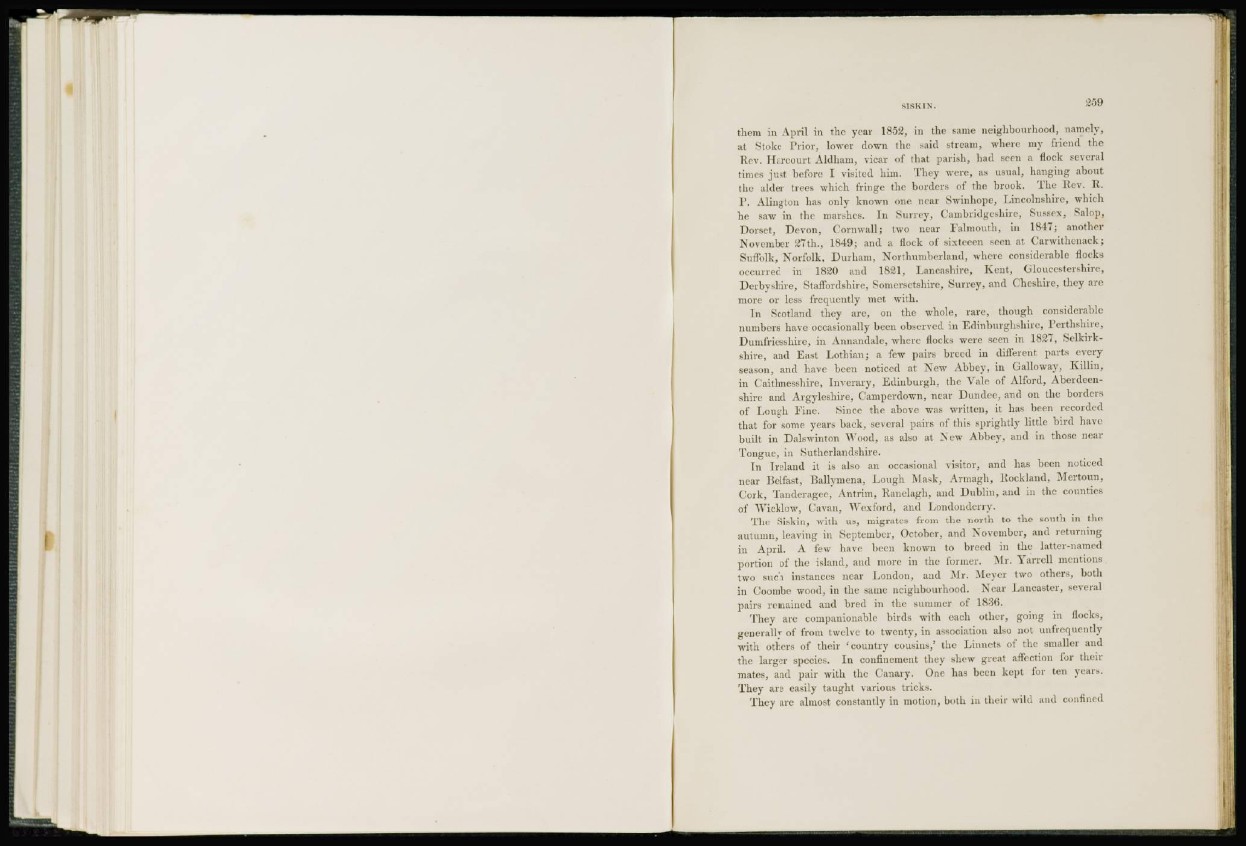
1SKIN 259
them in April in the year 1852, in the same neighbourhood, namely,
at Stoke Prior, lower clown the said stream, where my friend the
Rev. Harcourt Aldham, vicar of that parish, had seen a flock several
times just before I visited him. They were, as usual, hanging about
the alder trees which fringe the borders of the brook. The Rev. R.
P. Alington has only known one near Swinhope, Lincolnshire, which
he saw in the marshes. In Surrey, Cambridgeshire, Sussex, Salop,
Dorset, Devon, Cornwall; two near Falmouth, in 1847; another
.November 27th., 1849; and a flock of sixteeen seen at Carwithenack;
Suffolk, Norfolk, Durham, Northumberland, where considerable flocks
occurred in 1820 and 1821, Lancashire, Kent, Gloucestershire,
Derbyshire, Staffordshire, Somersetshire, Surrey, and Cheshire, they are
more or less frequently met with.
In Scotland they are, on the whole, rare, though considerable
numbers have occasionally been observed in Edinburghshire, Perthshire,
Dumfriesshire, in Annandale, where flocks were seen in 1827, Selkirkshire,
and East Lothian; a few pairs breed in different parts every
season, and have been noticed at New Abbey, in Galloway, Killin,
in Caithnesshire, Invcrary, Edinburgh, the Vale of Alford, Aberdeenshire
and Argyleshire, Caniperdown, near Dundee, and on the borders
of Lough Fine. Since the above was written, it has been recorded
that for some years back, several pairs of this sprightly little bird have
built in Dalswinton Wood, as also at New Abbey, and in those near
Tongue, in Suthcrlandshire.
In Ireland it is also an occasional visitor, and has been noticed
near Belfast, Ballymena, Lough Mask, Armagh, Rockland, Mertoun,
Cork, Tanderagee, Antrim, Kanelagh, and Dublin, and in the counties
of Wicklow, Cavan, Wexford, and Londonderry.
The Siskin, with us, migrates from the north to the south in the
autumn, leaving in September, October, and November, and returning
in April. A few have been known to breed in the latter-named
portion of the island, and more in the former. Mr. Yarrell mentions
two such instances near London, and Mr. Meyer two others, both
in Coombe wood, in the same neighbourhood. Near Lancaster, several
pairs remained and bred in the summer of 1836.
They are companionable birds with each other, going in flocks,
generally of from twelve to twenty, in association also not unfrcquently
with others of their 'country cousins,' the Linnets of the smaller and
the larger species. In confinement they shew great affection for their
mates, and pair with the Canary. One has been kept for ten years.
They are easily taught various tricks.
They are almost constantly in motion, both in their wild and confined